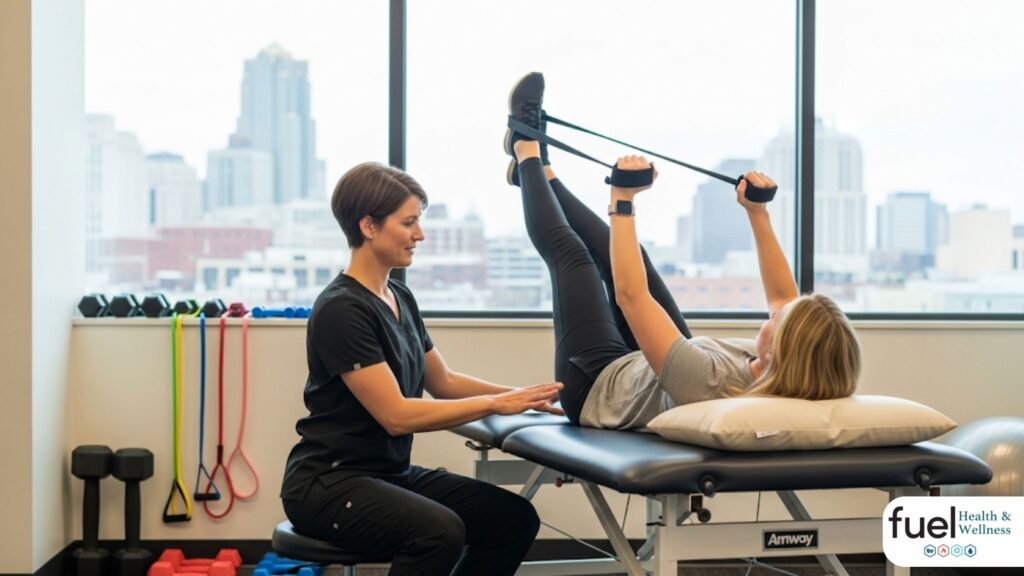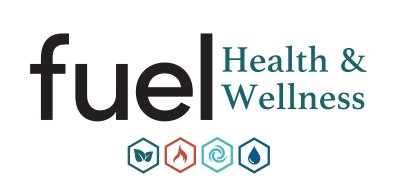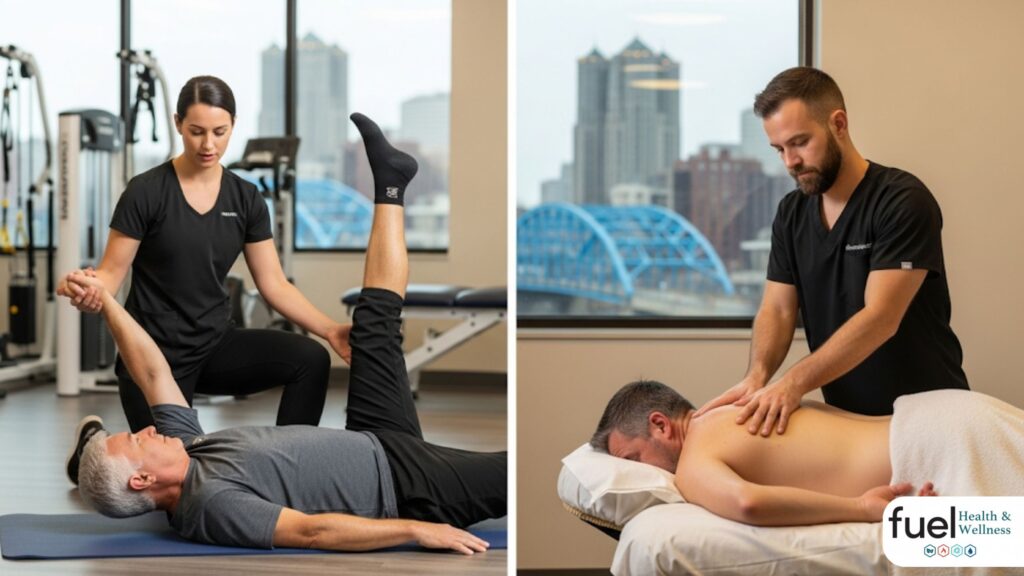Residents dealing with aches, strains, or lingering discomfort in Grand Rapids often face a pivotal decision: the choice between Physical Therapy vs Massage Therapy can shape long-term outcomes for injury recovery and overall well‐being. Both approaches offer hands‐on care, yet their goals, techniques, and treatment plans vary significantly based on each client’s unique needs. With options ranging from one‐on‐one sessions at local clinics to multi‐disciplinary rehabilitation centers, understanding the distinctions and benefits of each is crucial for effective pain management and rehabilitation services in Grand Rapids. This comprehensive guide dives into how each modality works, when to choose one over the other, and why integrating both can optimize recovery.
Should I choose physical therapy or massage therapy?
Deciding whether to pursue physical therapy or massage therapy often comes down to the root cause of pain and the desired outcome. Physical therapy typically centers on restoring strength, mobility, and functional movement following injury or surgery, whereas massage therapy focuses more on reducing muscle tension, improving circulation, and promoting relaxation. Clients recovering from orthopedic surgeries, sports injuries, or neurological conditions will often benefit first from targeted exercises and mobility training under a licensed physical therapist. Conversely, individuals experiencing day‐to‐day stress, chronic muscle tightness, or acute soft tissue soreness may find faster relief through skilled massage techniques.
That said, neither approach needs to be an exclusive choice. Many providers recommend beginning with massage therapy to ease pain signals and prepare the body for more active rehabilitation. Once soft tissue quality improves and muscle guarding decreases, transitioning into exercise‐based interventions can build long‐term resilience. On the flip side, integrating manual soft tissue work during a physical therapy program accelerates healing by addressing scar tissue, fascial restrictions, and postural imbalances that limit progress during strength training.
Ultimately, the decision hinges on functional goals, injury severity, and personal preferences. A comprehensive evaluation by a qualified professional can clarify which modality—or combination—best aligns with recovery objectives. For those unsure where to start, a brief consultation with a rehabilitation specialist can map out an individualized care plan that may include both massage and therapist‐led exercise protocols.
How does physical therapy work for injury recovery in Grand Rapids?

Physical therapy for injury recovery in Grand Rapids begins with a detailed assessment of movement patterns, joint mobility, and muscle strength. A licensed physical therapist designs a customized plan that often incorporates manual therapy, therapeutic exercises, and education on safe daily movement. This approach not only targets the site of pain but also identifies compensatory movement patterns elsewhere in the body, preventing future injuries and addressing underlying biomechanical issues.
A key component of many programs is physical therapy for injury recovery Grand Rapids, where clinicians guide patients through graded activity progressions and sport‐specific drills. This ensures clients regain confidence in their movement while minimizing pain flare‐ups. Throughout treatment, objective measures like range of motion, strength testing, and functional assessments track improvement and guide adjustments to the exercise plan.
Manual hands‐on techniques play a vital role in many clinics. From joint mobilizations to soft tissue mobilization, these interventions can decrease joint stiffness, improve circulation, and reduce pain before active strengthening. A focus on manual therapy Grand Rapids MI helps bridge the gap between passive relief and active recovery by preparing tissues for exercise and facilitating better movement quality.
What does massage therapy for pain relief look like in Grand Rapids?
Massage therapy for pain relief Grand Rapids clinics often begin each session with a conversation about symptom history, daily routines, and specific areas of concern. A licensed massage therapist then selects from modalities like deep tissue massage, myofascial release, or trigger point therapy to target tight muscles, adhesions, and fascial restrictions. By applying precise pressure and movement, therapists can interrupt pain‐modulating pathways, improve lymphatic flow, and promote relaxation.
Beyond the hands‐on work, stress relief massage Grand Rapids protocols frequently integrate techniques such as effleurage and petrissage to soothe the nervous system. Clients consistently report reduced muscle guarding, improved sleep quality, and a sense of calm that extends well after the session ends. For those dealing with headaches, neck pain, or generalized stiffness, soft tissue therapy Grand Rapids offers an immediate, drug‐free option for easing discomfort.
In many cases, massage therapy provides more than just temporary relief. Skilled practitioners educate clients on self‐care strategies like foam rolling, targeted stretching, and ergonomic modifications, extending the benefits of each session into everyday life. Combining hands‐on relief with home strategies creates a roadmap for sustained comfort and improved function.
Benefits of combining physical therapy and massage therapy

Integrating massage therapy into a physical therapy regimen yields a powerful synergy that accelerates recovery and enhances outcomes. While active rehabilitation rebuilds strength and mobility, hands‐on soft tissue work reduces barriers to movement by releasing scar tissue, improving blood flow, and calming hypersensitive muscles. This complementary approach ensures that clients progress smoothly from passive relief into active strengthening without pain setbacks.
Rehabilitation services Grand Rapids centers increasingly offer combined packages, recognizing that manual interventions prepare the body for more advanced exercises. In cases of chronic tension, muscle tension therapy Grand Rapids reduces hypertonicity in major muscle groups, paving the way for functional retraining. Addressing muscle quality first enables clients to engage more effectively with targeted exercise protocols and movement drills.
Moreover, the dual approach supports better pain management strategies. Massage therapy helps mitigate acute pain, which in turn boosts patient confidence during challenging physical therapy exercises. As a result, clients often experience fewer pain spikes, increased session adherence, and an overall faster return to daily activities.
Physical Therapy vs Massage Therapy: Chronic Pain Management in Grand Rapids
Physical Therapy vs Massage Therapy proves a critical crossroads for individuals suffering from persistent pain. Chronic pain treatment Grand Rapids patients require more than just symptomatic relief; they need sustainable strategies that address central sensitization, muscular imbalances, and lifestyle factors. Physical therapy employs graded exposure to movement, neuromuscular re‐education, and ergonomic modifications to reduce pain signals over time.
Massage therapy complements these strategies by providing immediate neural dampening and soft tissue remodeling. Techniques like myofascial release and gentle lymphatic drainage interrupt pain cycles, decrease inflammation, and offer short‐term respite. By weaving manual therapies into a broader rehabilitation plan, clinicians in Grand Rapids can deliver a comprehensive pain management pathway that spans both immediate relief and long‐term functional restoration.
Patients often report that initial massage sessions break down the barrier of movement‐induced pain, making subsequent physical therapy sessions more tolerable. Over weeks of integrated care, pain thresholds rise, movement confidence expands, and reliance on passive relief diminishes. The end goal is a client who actively participates in their recovery, harnessing both therapeutic modalities for lasting resilience.
What types of conditions are best treated by each modality?
Physical therapy excels at addressing acute injuries, post‐operative rehabilitation, and functional deficits stemming from neurological or orthopedic conditions. Whether recovering from a rotator cuff repair, regaining balance after a stroke, or managing osteoarthritis, PTs leverage exercise science, gait training, and assistive devices to restore clients to their highest level of independence. Their thorough assessments catch compensatory patterns early, preventing secondary issues down the road.
Massage therapy shines in scenarios dominated by soft tissue restrictions, overuse injuries, and stress‐induced tension. Athletes gearing up for competition, office workers battling neck and shoulder tightness, and chronic headache sufferers all benefit from targeted myofascial release, trigger point deactivation, and relaxation techniques. By focusing on muscle pliability and circulation, therapists can reduce discomfort and set the stage for more intensive rehabilitation when needed.
Both disciplines overlap in areas like scar management and posture correction. In some Grand Rapids clinics, a hybrid treatment plan might include trigger point massage immediately followed by movement re‐education to ensure newly freed tissue integrates smoothly into daily tasks. This collaborative spirit between therapists ensures that clients receive the most appropriate care for their specific condition.
Side‐by‐Side Comparison of Therapy Modalities
| Criteria | Physical Therapy | Massage Therapy |
|---|---|---|
| Core Focus | Restoring mobility, strength, and function | Reducing muscle tension, improving circulation, relaxation |
| Techniques | Therapeutic exercises, joint mobilizations, neuromuscular re‐ed | Deep tissue massage, myofascial release, trigger point work |
| Ideal Conditions | Post‐surgical rehab, sports injuries, neurological deficits | Soft tissue restrictions, stress‐related tension, mild soreness |
| Treatment Duration | 30–60 minutes per session, multiple weeks | 30–90 minutes per session, flexible scheduling |
| Outcome Measures | Objective strength and mobility tests, functional assessments | Subjective pain scales, muscle pliability, relaxation ratings |
The table above highlights how each modality approaches care, from core objectives to outcome measures. Clients and providers can use these criteria to match symptoms with the most effective treatment style.
How to choose the right provider in Grand Rapids
Finding the ideal care team starts with verifying credentials and experience. A doctoral‐level physical therapist brings advanced training in anatomy, pathology, and exercise physiology, while a licensed massage therapist holds specialized certifications in soft tissue techniques and therapeutic modalities. Investigating clinic offerings and pinpointing those that emphasize your goals—whether athletic performance, chronic pain relief, or post‐operative rehab—is essential when exploring Physical Therapy Grand Rapids options.
Next, consider practical factors like location, appointment availability, and insurance partnerships. Many Grand Rapids clinics now offer online intake forms, virtual screenings, and flexible scheduling to reduce wait times and streamline care. Reading patient reviews can also uncover how well a provider listens to client concerns, educates on self‐management strategies, and communicates progress throughout the treatment journey.
Lastly, inquire about collaborative care models. Clinics that integrate both massage therapists and physical therapists on staff often coordinate treatment plans more seamlessly, ensuring that manual interventions and exercise protocols reinforce each other. This team‐based approach minimizes redundant assessments and accelerates overall progress toward meaningful recovery.
What should you expect during your first visit?
On your initial physical therapy visit, expect a comprehensive movement analysis that examines joint range, muscle strength, balance, and posture. The therapist will review medical history, identify current pain triggers, and develop a measurable care plan with clear short‐term and long‐term goals. This session often includes gentle manual techniques to assess tissue responsiveness before introducing active exercises.
Conversely, a massage therapy consultation typically begins with a discussion about lifestyle factors, sleep patterns, and areas of heightened discomfort. The therapist then tailors the session to client preferences—ranging from light Swedish massage to deeper trigger point work—while monitoring tolerance and adjusting pressure accordingly. Most first‐time clients appreciate guidance on home stretching routines and posture adjustments to maximize the benefits between sessions.
Both initial visits prioritize open communication. Clients should feel empowered to voice pain levels, set comfort thresholds, and share progress or setbacks. Creating a transparent dialogue from the start fosters trust and ensures the treatment plan aligns with individual needs.
How to integrate therapeutic massage vs physical therapy for optimal results?
Integrating modalities effectively requires strategic planning and coordinated scheduling. Many clients begin with a series of massage sessions to address acute pain and muscular guarding before transitioning into formal rehabilitation exercises. As soft tissue quality improves, therapists can progressively introduce strength‐building protocols without the risk of pain inhibiting active participation.
Conversely, embedding occasional massage sessions within an ongoing physical therapy program can prevent plateaus and reduce delayed‐onset muscle soreness following intense exercise days. This blend of passive relief and active recovery maintains client engagement and minimizes the risk of overuse injuries, creating a balanced treatment rhythm that supports consistent progress.
Clinicians often discuss broader care pathways—such as Physical Therapy vs. Chiropractic Care—with clients exploring multiple manual treatment options. By mapping out when to book hands‐on sessions, when to perform home exercises, and when to rest, clients maximize the efficacy of each modality and achieve more predictable recovery timelines.
Final Words
At Fuel Health & Wellness, residents can access both massage therapy and physical therapy services under one roof. The interdisciplinary team collaborates on each case, ensuring clients navigate the continuum of care seamlessly from initial assessment through full functional restoration. Customized programs blend manual soft tissue release with targeted exercise progressions, elevating outcomes for injury recovery, chronic pain treatment Grand Rapids, and stress management alike.
To begin crafting a tailored rehabilitation plan, simply Contact us to schedule a complimentary screening. During this brief consultation, team members review your goals, medical history, and lifestyle demands, then recommend the most appropriate mix of massage and therapeutic interventions. By placing patient comfort and long‐term function at the forefront, Fuel Health & Wellness empowers clients to reclaim mobility and thrive in daily life.
In summary, the choice between Physical Therapy vs Massage Therapy should be guided by individual needs, recovery goals, and the underlying cause of pain. Physical therapy shines in restoring functional movement after injury or surgery, while massage therapy offers unparalleled relief from muscle tension and stress. For many Grand Rapids residents, a combined approach delivers the fastest, most sustainable results. By evaluating credentials, clinic partnerships, and treatment philosophies, clients can select a provider who aligns with their vision for recovery and well‐being.
Frequently Asked Questions
What is better for back pain: massage therapy or physical therapy?
For acute back pain, an initial massage session can reduce muscle guarding and provide immediate relief. However, long‐term improvement typically requires targeted physical therapy exercises to restore core stability, flexibility, and posture. Combining both often yields the best outcomes by pairing symptom relief with functional strengthening.
How long does a typical physical therapy session last?
Most physical therapy sessions range from 30 to 60 minutes, depending on the complexity of the evaluation and exercise plan. Initial evaluations may run longer as therapists conduct detailed assessments, while follow‐up visits focus on exercise progression and manual techniques.
Can massage therapy help after surgery?
Yes. Post‐operative massage helps manage scar tissue, reduce swelling, and promote lymphatic drainage. It should be introduced only after receiving medical clearance and under guidance from a surgeon or physical therapist to ensure safety and proper timing.
Do insurance plans cover both therapies in Grand Rapids?
Coverage varies by policy and provider. Many health plans include at least partial coverage for physical therapy when prescribed by a physician. Massage therapy coverage is less common but may be available for certain conditions when deemed medically necessary. It’s best to confirm with your insurer and clinic before scheduling.
When should someone see a physical therapist versus a massage therapist?
Seek a physical therapist for issues related to movement loss, post‐surgical rehab, balance deficits, or chronic joint problems. Opt for a licensed massage therapist when the primary concern is muscle tightness, stress relief, or soft tissue soreness without major mobility restrictions. In many cases, consulting both professionals provides the most comprehensive care.


